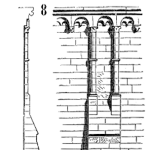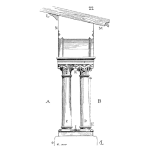
The third edition of API 752, “Management of Hazards Associated with Permanent Buidlings” came out in late 2009 and there are a few major revisions to consider.
[Read more…]Your Reliability Engineering Professional Development Site

The third edition of API 752, “Management of Hazards Associated with Permanent Buidlings” came out in late 2009 and there are a few major revisions to consider.
[Read more…]by Arun Gowtham Leave a Comment

Part 1 of this article is here. And it covered Tips# 1 to 3.
AI projects are R&D initiatives and not simply IT projects. Organizations miss the mark in realizing value from AI as they undertake AI projects just like their network update, or systems infrastructure upgrade.
[Read more…]by Greg Hutchins Leave a Comment

This article is the seventh of fourteen parts to our risk management series. The series will be taking a look at the risk management guidelines under the ISO 31000 Standard to help you better understand them and how they relate to your own risk management activities. In doing so, we’ll be walking through the core aspects of the Standard and giving you practical guidance on how to implement it. [Read more…]
by Greg Hutchins Leave a Comment

In CERM Risk Insights #354 I discussed the risk management study of local governments in New Zealand. One of the cases in the study was Environment Canterbury Regional Council. The regional council’s focus and the increasing concerns about environmental risks by both the public and private sector represents a challenge to the common approach used by most of the New Zealand local governments, ISO 31000:2018 and the International Organization for Standardization (ISO) more generally. This piece discusses this challenge to ISO 31000:2018 and its implications.
[Read more…]
Carl and Dianna sharing experiences with different forms of managing quality and reliability activities. The importance of independence was compared to the importance of integrating with the design activities. What works, what doesn’t work, and why?
ᐅ Play Episode
by Greg Hutchins Leave a Comment

This article is the sixth of fourteen parts to our risk management series. The series will be taking a look at the risk management guidelines under the ISO 31000 Standard to help you better understand them and how they relate to your own risk management activities. In doing so, we’ll be walking through the core aspects of the Standard and giving you practical guidance on how to implement it.
In previous articles we’ve looked at the core elements of the risk management framework, as well as the role of leadership and commitment, integration, design and implementation more specifically. In this article, we’ll be looking at how to effectively evaluate your organisation’s risk management framework.
[Read more…]by Greg Hutchins Leave a Comment

What does the future of any profession mean? Underdetermined future events (e.eg. COVID-19)? Future proof job? Work /family balance? Health at a later date? Secure retirement? It is all of the above and that is why you need to choose the right profession for you.
The future of the project management profession is bright and strong for a long time to come.
[Read more…]by Greg Hutchins Leave a Comment

This article is the fifth of fourteen parts to our risk management series. The series will be taking a look at the risk management guidelines under the ISO 31000 Standard to help you better understand them and how they relate to your own risk management activities. In doing so, we’ll be walking through the core aspects of the Standard and giving you practical guidance on how to implement it.
In previous articles (1st, 2nd, 3rd, & 4th) we’ve looked at the core elements of the risk management framework generally, as well as the role of leadership and commitment, integration and design more specifically. In this article, we’ll be looking at how to effectively implement the risk management framework into your organisation.
[Read more…]by Greg Hutchins Leave a Comment

This article is the fourth of fourteen parts to our risk management series. The series will be taking a look at the risk management guidelines under the ISO 31000 Standard to help you better understand them and how they relate to your own risk management activities. In doing so, we’ll be walking through the core aspects of the Standard and giving you practical guidance on how to implement it.
In previous articles (1st, 2nd, & 3rd) we’ve looked at the core elements of the risk management framework generally, as well as the role of leadership and commitment, and integration more specifically. In this article, we’ll be looking at how to effectively design your risk management framework.
[Read more…]by Greg Hutchins Leave a Comment

This article is the third of fourteen parts to our risk management series. The series will be taking a look at the risk management guidelines under the ISO 31000 Standard to help you better understand them and how they relate to your own risk management activities. In doing so we’ll be walking through the core aspects of the Standard and giving you practical guidance on how to implement it.
In our previous articles (1st, 2nd) we introduced you to the core elements of the risk management framework. This included integration, design, implementation, evaluation, improvement, and the role of leadership and commitment.
In this article, we’ll be looking at integrating and adapting the risk management framework to your organisation. In particular, we’ll be focusing on how you can best understand your organization’s structures and context, appreciate the role of governance and strategy, appreciate risk management accountability, and the importance of being iterative and dynamic with your approach to integration.
[Read more…]by Mike Sondalini Leave a Comment

Understanding ISO 55001 clauses is vital for building a compliant ISO 55001 Asset Management System. Understanding ISO 55001 clauses is easy with a logical flowchart.
The meaning of the contents in the ISO 55001 asset management standard must be correctly interpreted and properly addressed in your asset management system
To fully understand the implications of an ISO 55001 clause, it is necessary to strip each sentence, phrase, and sub-point down into its logical elements
Learn how to turn the text in an ISO 55001 clause into a logical flowchart that lets you fully appreciate the implications and build the correct application in your asset management system.
[Read more…]by Greg Hutchins Leave a Comment

This article is the first in our risk management series. The series will be taking a look at the risk management guidelines under the ISO 31000 Standard to help you better understand them and how they relate to your own risk management activities. In doing so we’ll be walking through the core aspects of the Standard and giving you practical guidance on how to implement it.
In this particular article, we’ll be introducing you to the ISO 31000 Standards, the guiding principles, and outlining the risk management framework.
[Read more…]by Sanjeev Saraf Leave a Comment

About a year ago, the Minerals Management Services (MMS) proposed a new rule that would require operators of oil and gas operations in the US Outer Continental Shelf to develop and implement Safety and Environmental Management System (SEMS).
It is expected that the rule will be promulgated sometime this year (2010).
[Read more…]by Greg Hutchins Leave a Comment

Guest Post by Howard M. Wiener (first posted on CERM ® RISK INSIGHTS – reposted here with permission)
I am pretty close to completing my first book – Agile Enterprise Risk Management, Risk-Based Thinking, Multi-Disciplinary Management and Digital Transformation. It is now at the publishers, awaiting finalization. I have established a site for the book and this is the home page text that describes what AERM is all about.
[Read more…]by Greg Hutchins Leave a Comment

How does Earn Value Management (EVM) reduce project risk? To answer this question, you have to understand what EVM is.
EVM is the tool used to measure progress against the PMB. (Performance Measurement Plan). EVM identifies poorly performing WP (Work Packages) and problem trends early in the project allowing maximum time to identify the root cause of the problem and identify an action plan to fix the problem.
[Read more…] Ask a question or send along a comment.
Please login to view and use the contact form.
Ask a question or send along a comment.
Please login to view and use the contact form.